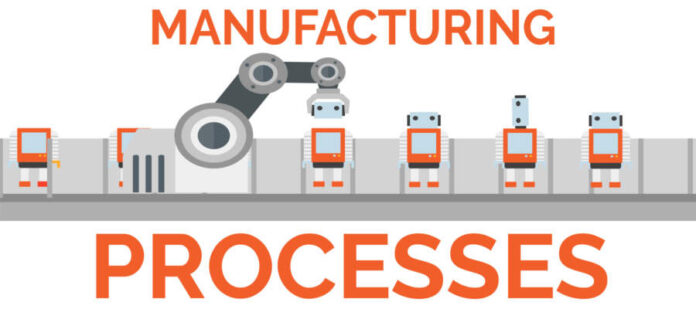Have you ever looked at a product on the shelf and wondered, “How did this get here?” The answer is simple: manufacturing. From conception to creation, countless processes and steps are involved in making any item. Efficient manufacturing can mean the difference between success and failure for companies of all sizes, so they must take the necessary steps to streamline their production processes as much as possible to remain competitive in today’s market.
In this article, we explore how efficient manufacturing practices can increase your products’ speed, accuracy, and productivity while decreasing costs associated with mistakes or delays. Read on to discover essential tips for optimizing your organization’s production process.
What is the importance of efficient manufacturing processes in product development?
Efficient manufacturing processes play a pivotal role in driving product development toward success. As companies face increasing competition and customer demands, streamlining production methods ensures that businesses remain profitable and allows them to innovate and stay ahead of their competitors.
By utilizing cutting-edge technologies and optimizing resource usage, manufacturers can reduce production times, minimize waste, and enhance product quality. It is particularly vital in rapidly evolving industries, where adaptability and expedient response to market trends are crucial.
Businesses can ultimately secure a solid foundation for robust product development and long-term growth by focusing on continuous improvement and embracing sustainable manufacturing practices. In this dynamic global market, efficient manufacturing processes are the linchpin for ensuring a company’s ability to deliver value to its consumers and stakeholders. Check out morphomfg.com for more info.
Identifying opportunities for automating and streamlining production processes
To manufacture items efficiently, companies must first identify opportunities for automating and streamlining production processes. By doing so, they can eliminate time-consuming and costly manual tasks while increasing the accuracy of their products.
The integration of robotics and artificial intelligence (AI) technologies into modern manufacturing is one such opportunity that allows businesses to reduce labor costs while simultaneously increasing precision and output. Additionally, businesses seeking to automate their processes should assess the practicality of using advanced computer-aided design (CAD) or additive manufacturing (3D printing) systems to quickly prototype new ideas or iterate on existing designs.
Manufacturers should use Industry 4.0 technologies like cloud computing, internet of things (IoT) platforms, and big data analytics to gather real-time insights into production processes and enable greater control over their outcomes. By leveraging the power of these technologies, businesses can effectively measure and improve their system’s performance over time.
How to create a plan for making and distributing products efficiently
When creating a plan for efficient and effective production, businesses must consider how they make and distribute their products. It could involve assessing the need for specialized equipment or personnel and understanding potential delays in different stages of production.
Manufacturers should also consider the best methods to store completed products, whether in-house warehousing or outsourcing to a third party. Additionally, an optimal supply chain is critical to ensure that suitable materials are sourced at the right time and shipped on schedule. Developing strong partnerships with reliable suppliers who understand your company’s needs can help prevent any issues from arising during this crucial process step.
Finally, manufacturers must analyze their manufacturing processes periodically and adjust them accordingly. It will help reduce waste, boost quality control, and allow businesses to remain agile in changing market dynamics. It’s also vital to track and document production data to ensure changes are based on accurate information.
The benefits of combining traditional and modern manufacturing techniques
Combining traditional and modern manufacturing techniques can bring numerous benefits to the table. For example, businesses may use advanced technologies such as robotics and 3D printing for some tasks while relying on manual labor for others. It can keep costs down by allowing manufacturers to use existing infrastructure and skilled workers and benefit from new opportunities presented by technological advancements.
Not only that, but it also enables business owners to take advantage of their employees’ skillsets and expertise. By fully leveraging employees’ capabilities, manufacturers can develop more sophisticated products in less time with fewer errors – which is becoming increasingly important in the current competitive landscape.
Optimizing cost-effectiveness in the manufacturing process
Manufacturers must also aim to optimize cost-effectiveness in the production process. It can include streamlining operations, such as ensuring that all machines are running at total capacity or reducing waste by finding ways of reusing materials. Additionally, businesses should consider automating repetitive tasks and introducing lean manufacturing techniques to speed delivery times and reduce costs.
Manufacturers may opt for modular design approaches, which allow for faster assembly and disassembly of components. It could be further supported with just-in-time inventory practices and virtual simulation technologies, which enable developers to test each part’s performance without making it first.
Read More: 5 Tips to Help You Purchase Quality Printed Circuit Boards






























































